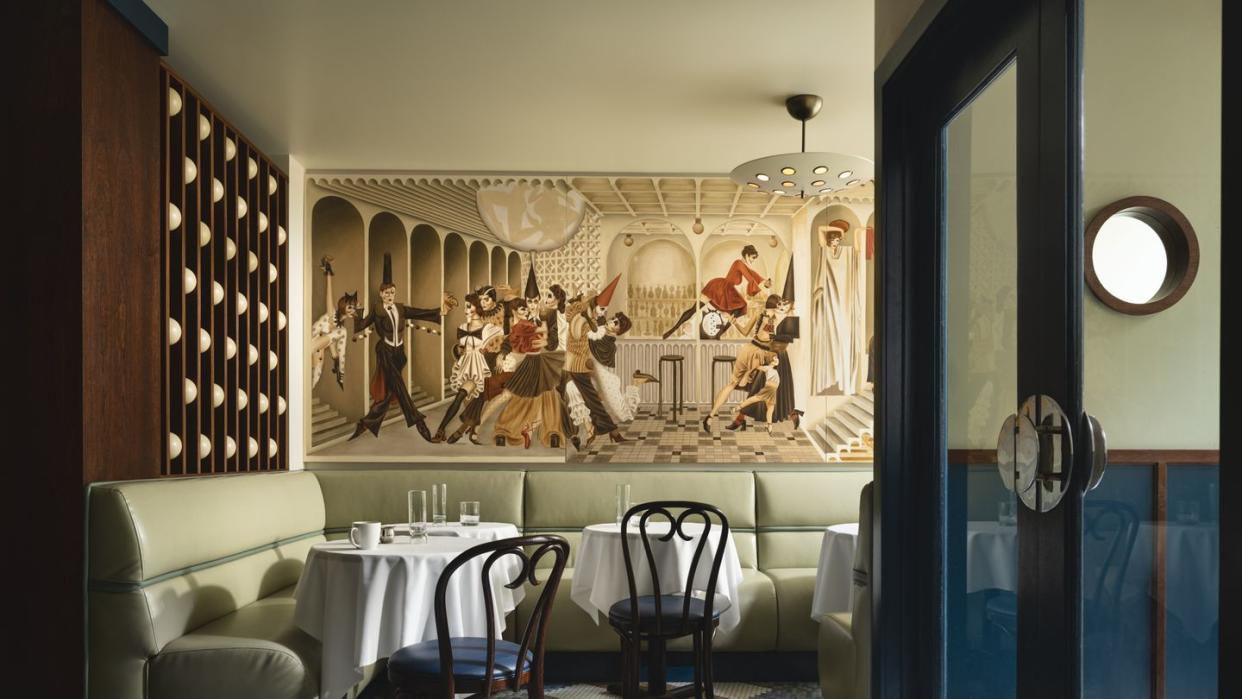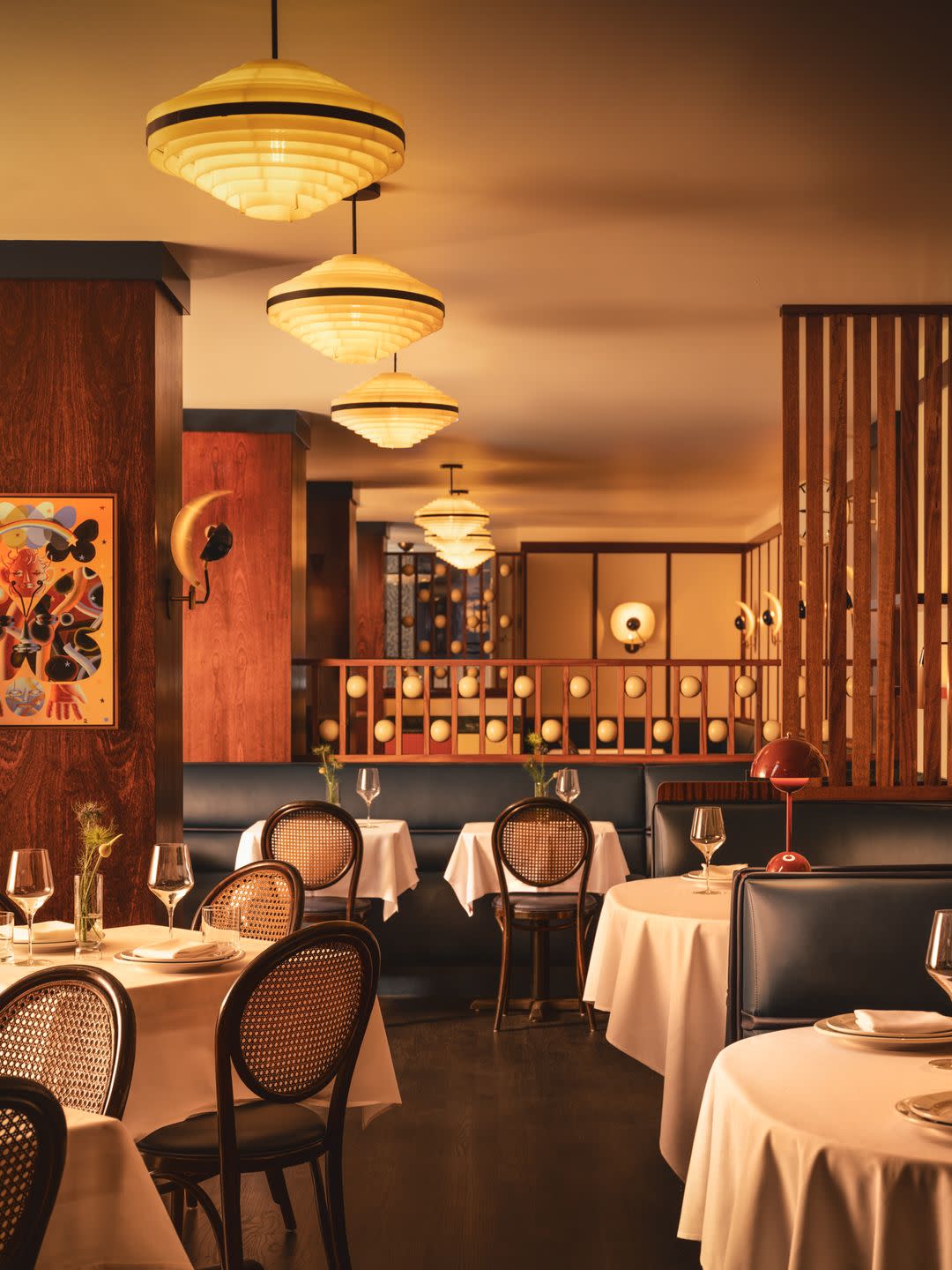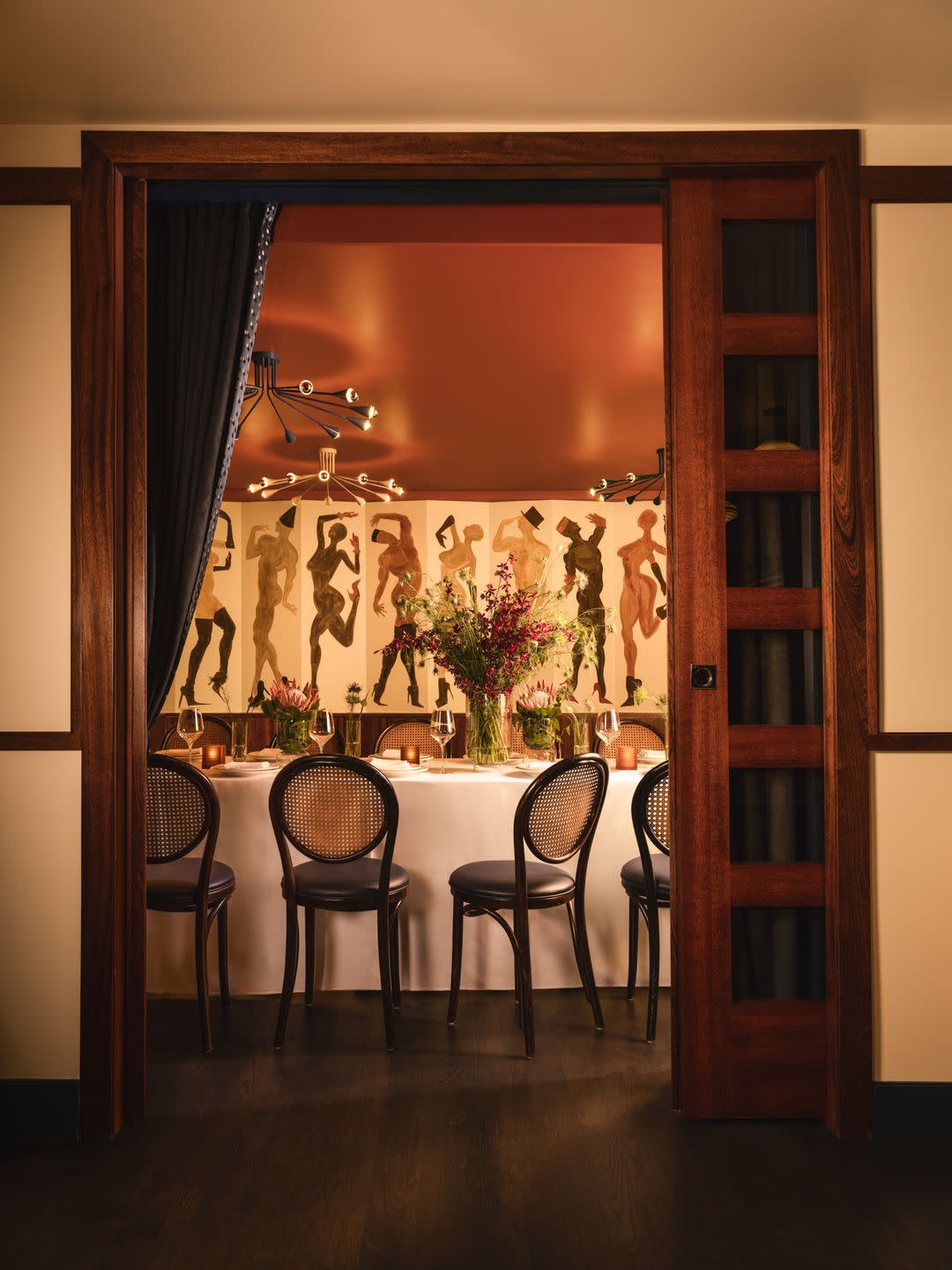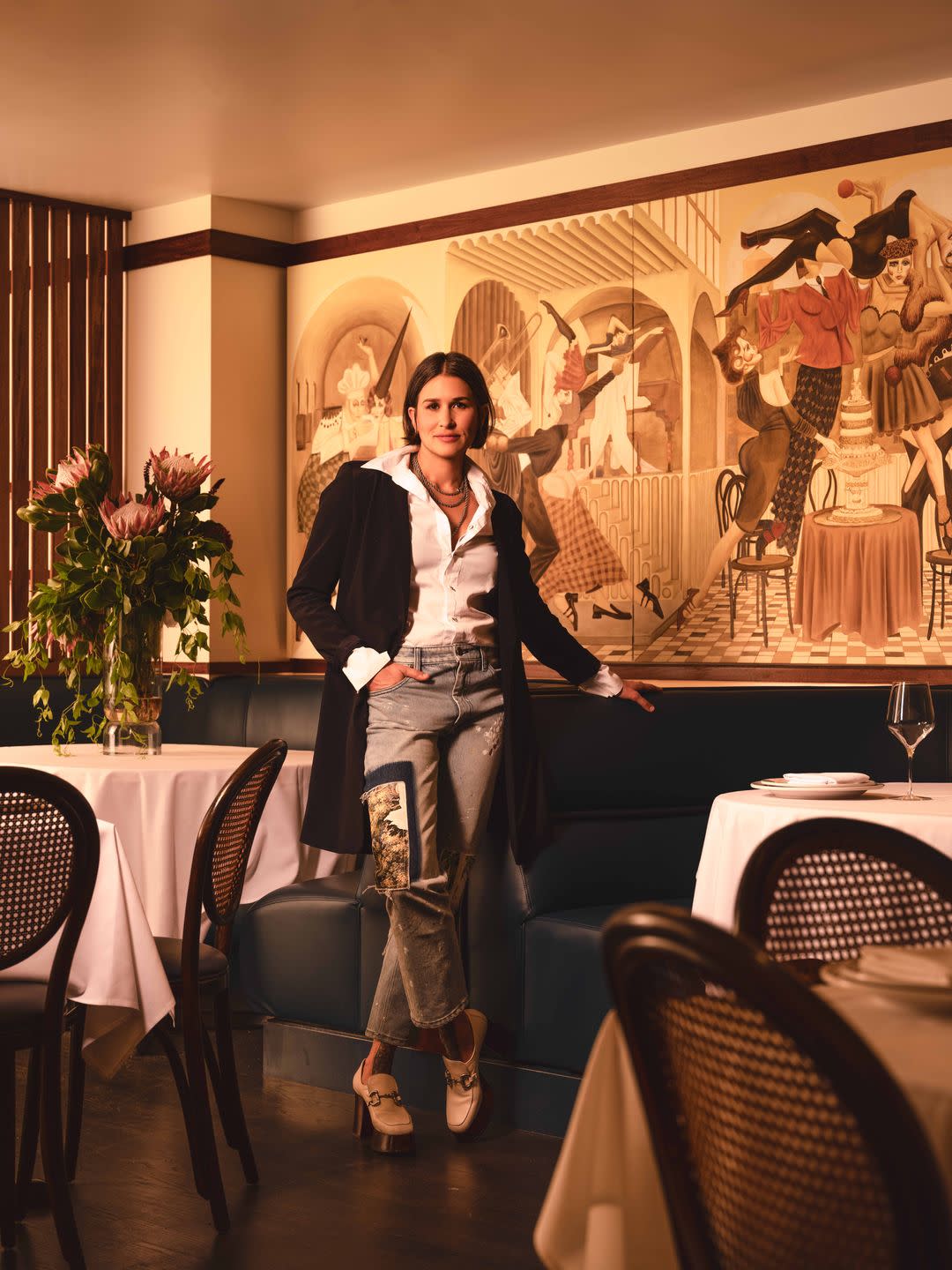A New York City Restaurant That Brings Plenty of Art Deco Vroom

Cecchi’s, a new restaurant opened this summer in Manhattan’s West Village by the local dining-scene fixture Michael Cecchi-Azzolina, has a few mementos for the many people who spent countless nights at this location’s previous occupant: Café Loup, the French bistro that was once a cornerstone of downtown New York life.

First, there’s the marble lectern—a relic of a Catholic church—which still serves as the host stand. Then there’s the chrome cash register, which still sits prominently behind the bar. And there are the older restaurant’s original chairs, which designer Becky Carter decided to restore rather than jettison for newer pieces.
“Every chair is slightly different, each with a unique patina that you just can’t fabricate or fake,” she says.

Aside from those reminders of the past, Carter has otherwise reinvented the space entirely. Murals by Jean-Pierre Villafañe, whom Cecchi-Azzolina had tapped prior to partnering with Carter, give the restaurant an Art Deco vroom; Carter was inspired by the Puerto Rican–born, New York–based artist’s dancing figures and designed a room to match their rhythm. “I wanted the space to accommodate his characters, as if they themselves were raucous guests,” Carter says. Her hot and moody design features dark wood paneling, navy and celadon leather banquettes, and a rust-colored ceiling that reflects the amber glow of the 1970s pendants she sourced from the Czech Republic.

Carter added those banquettes to give the restaurant an exclusive vibe. “I wanted to create pockets of intimacy so people would feel simultaneously a part of the action as well as a voyeur,” she says. She worked around the challenges of the space’s architectural elements—existing columns, limited windows—by using those columns to form paneled partitions, and creating custom bar lighting to bring more light into the space.
The best place to take it all in? Carter recommends a spot at the corner of the bar, looking into the dining room. From there, she says, “I can watch all the action go down.”
You Might Also Like
